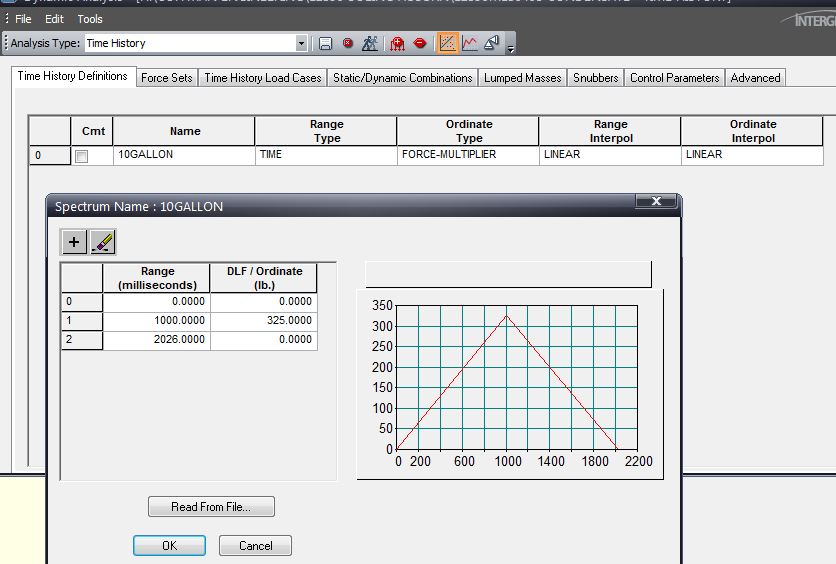I've been working on a time-history analysis for a forensic engineering project on a 8" pumped condensate line in a tunnel that failed at an anchor at a 1.5D elbow (ripped/busted anchor bolts from concrete).
I've been working with CII for 2 years and have taken the dynamics training. I started this analysis based off of a tutorial / training example from said class. I'm tapped out of resources and am writing to get an experienced reality check on my approach and results.
I've modeled this as B31.1, A106B and 140°F. Upstream of the anchor is 200' of straight pipe with a piston type EJ at the far end. Down stream of anchor, heading perpendicular, is 100' of straight pipe with a piston type EJ.
Anchor Input: Fx, Fy, Fz are 500,000 lbs/in. Mx, My and Mz are all as is. It's a stout anchor welded with thick plates.
Slug Assumptions: 10 gallons at 15 fps
Slug Force: ≈400 lbs
Rise Time: 630 ms
Sustained Time: 141 ms
Decay Time: 630 ms
Spectrum Definition (attached screen shot)
Force Set: 400 lbs in X; 400 lbs in Z
Time History Load Case: applied spectrum; factor 1.0 in Y direction.
Static/Dynamic Comb 1: D1 + S3
Results:
I'm getting stress levels in the 280,000 psi range and anchor forces in the 550,000 lb range all in this area I'm applying the slug flow.
Am I doing something wrong and/or inaccurate that I'm not catching? Are these loads reasonable based on my input?
Any help would add a few years to my life.
Louie
Attachments
